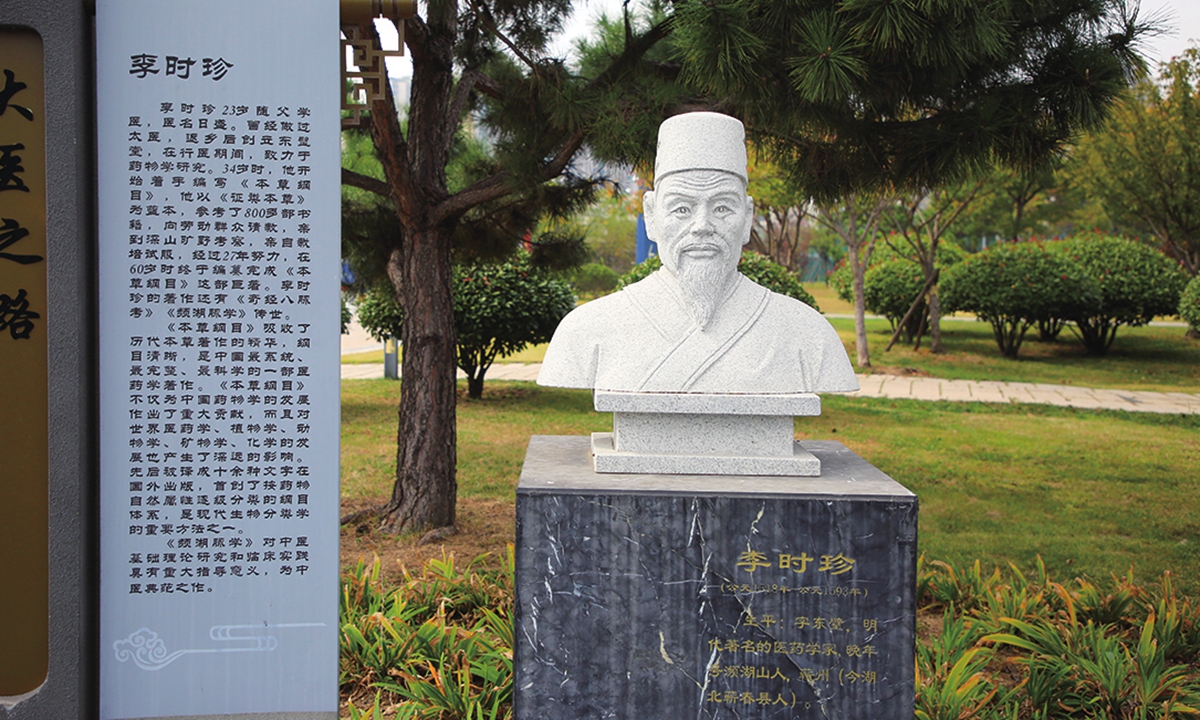
The statue of Li Shizhen Photo: VCG
Li Shizhen, a doctor and herbalist of the traditional medicine in China's Ming Dynasty (1368-1644), was born in Hubei Province in 1518.
His father, who was a famous doctor, did not want him to study medicine in the beginning since most doctors had low social status and lived a harsh life. But Li had been interested in medicine since an early age and pursued this love instead of spending time studying to become an official. After he failed the secondary level exams to become a government official three times, he made up his mind to give it up and turned to studying medicine. At the age of 23, he began to practice medicine together with his father.
When he was 33, Li became famous for curing the son of a noble. First he was hired by the noble's clinic, and then recommended to work at the imperial hospital, during which he had access to a great number of medical classics and medicinal materials. This laid a solid foundation for his later drafting of the
Compendium of Materia Medica.
One year later, Li quit his job and set up his own clinic at his hometown. While studying ancient medical books, he found many errors because over 1,000 years before him, all medical resources were just supplements based on others, making it very hard for people to check references. So Li decided to write a new book.
In 1552, Li began to draft the
Compendium of Materia Medica based on more than 800 ancient medical works. He also traveled to famous mountains and rivers in the provinces of Hunan, Hubei, Jiangxi and Hebei to seek answers to his questions. He drew upon the writings of his predecessors, corrected errors and issued amendments with important discoveries. It was Li who established the method of listing the names of medicines according to catalogues, producing the most complete and systematic work on herbal medicine by the 16th century.
Through 27 years of efforts, Li completed the first version by the age of 61, then he made three revisions before he died in 1593. The book was officially published three years after his death. Li is regarded as one of the greatest medical experts in China and the world, comparable to Isaac Newton, Charles Darwin and Galileo Galilei as his masterpiece is still of great value to medical research today.
Global Times




